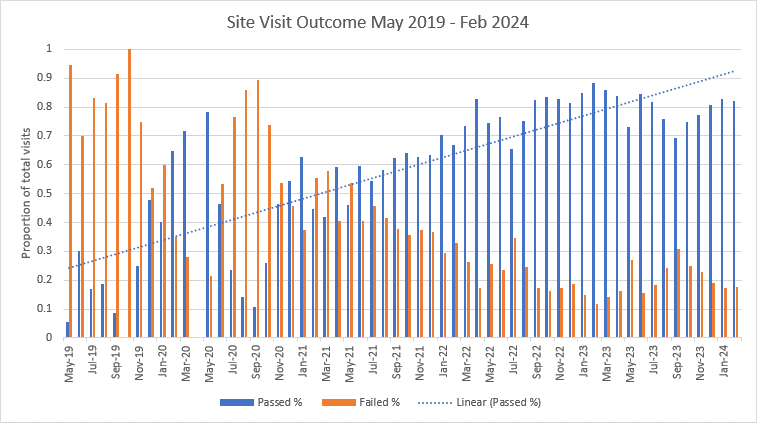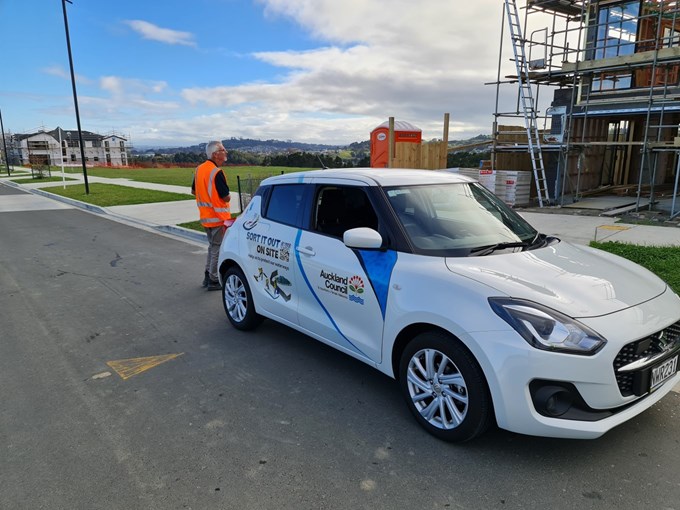Developer adherence to sediment control regulations on construction sites has rocketed up to 80 per cent compliance from 10 per cent since the introduction of Auckland Council’s Closing the Gap programme in 2019.
Since 1 July 2023, 80 percent of first site visits passed inspection (1519) while 20 per cent were issued either abatement and/or infringement notices (383).
Auckland Council’s Compliance Manager Adrian Wilson says the programme focuses on proactive rather than reactive compliance, to prevent sediment from entering our waterways. A team of four programme officers is funded through the Water Quality Targeted Rate (WQTR) and visit over 1200 sites a month to ensure appropriate controls are in place.
“Excess sediment is one of Auckland Council's major environmental concerns, and this initiative has targeted thousands of small development sites across the region, to ensure regulations are being followed,” says Wilson.
“The latest data shows our work to reduce the cumulative effect of widespread industry poor practice is paying dividends.”

Source: Auckland Council
Auckland Council’s Chair of the Planning, Environment and Parks Committee Councillor Richard Hills says that with between 10,000 and 12,000 new builds each year, the increasing risk of sediment discharge into Auckland’s waterways and coastal areas is significant.
“The success we’ve seen since the Closing the Gap project began is directly linked to the relationship our officers have built up with the building sector. It is pleasing to see the industry respond so positively to the programme,” adds Hills.
Auckland Council is also focused on combatting sediment by using new innovative techniques and technologies to monitor sediment across the region. Turbidity sensors have been introduced into waterways to convey “live’ data to compliance officers, alerting them to sediment entering a stream and allowing them to prioritise their response.
“The Water Quality Targeted Rate allows the council to investigate these new ways of working to better protect waterways and beaches for future generations,” says Auckland Council’s Head of Sustainable Outcomes Tom Mansell.
Another new piece of technology that has been implemented is the installation of cameras focused on streams, curbs, and pipe outlets where images taken use artificial intelligence (AI), to detect changes in those images. The AI has been trained to identify what the discharge into a stream is, such as concrete, sediment or wastewater, allowing officers to keep on top of the issue.
Breaches of the Resource Management Act 1991 make up the largest number of prosecutions bought by Auckland Council (70 per cent), and a large percentage of those relate to inadequate or ineffective erosion and sediment control.


